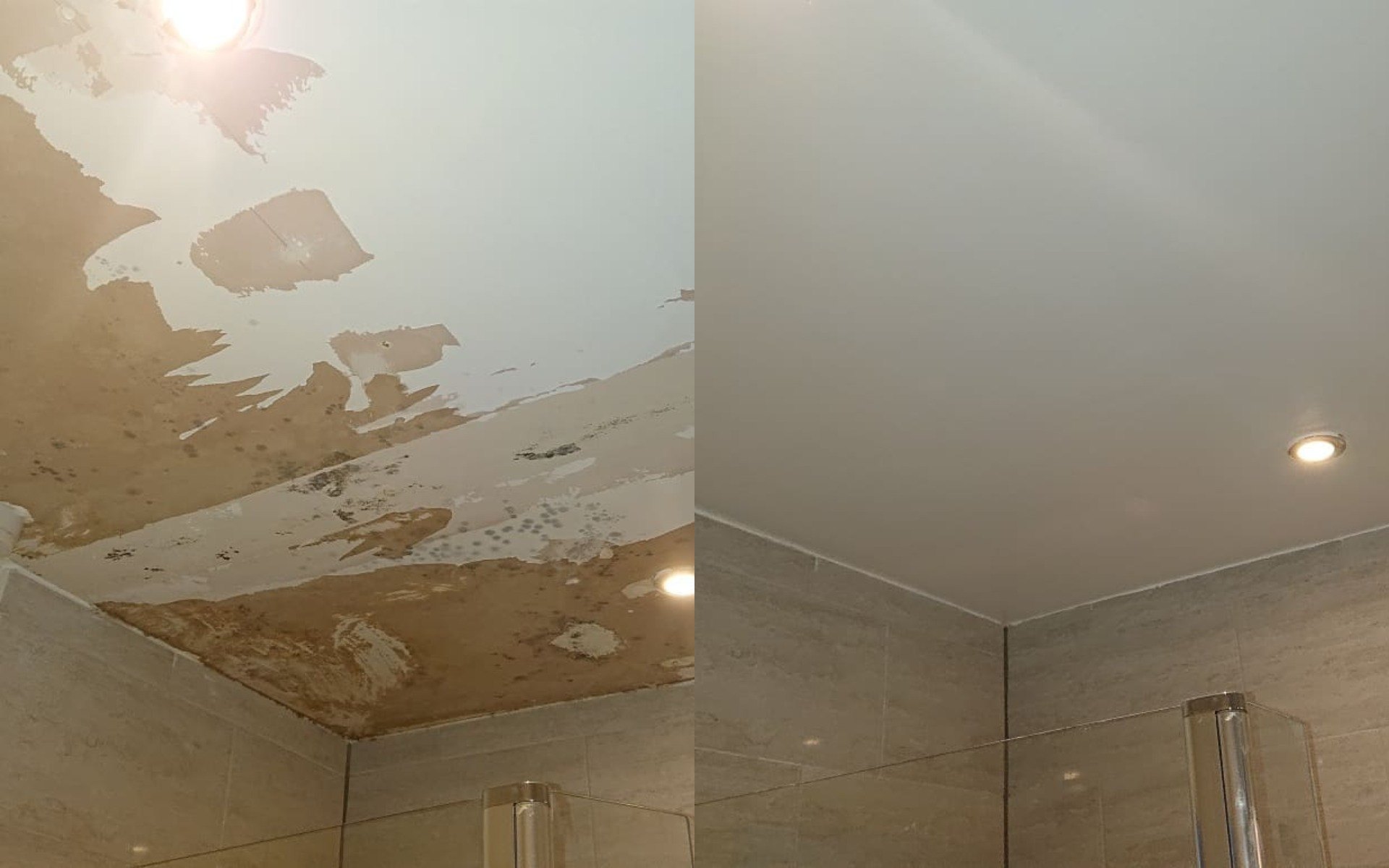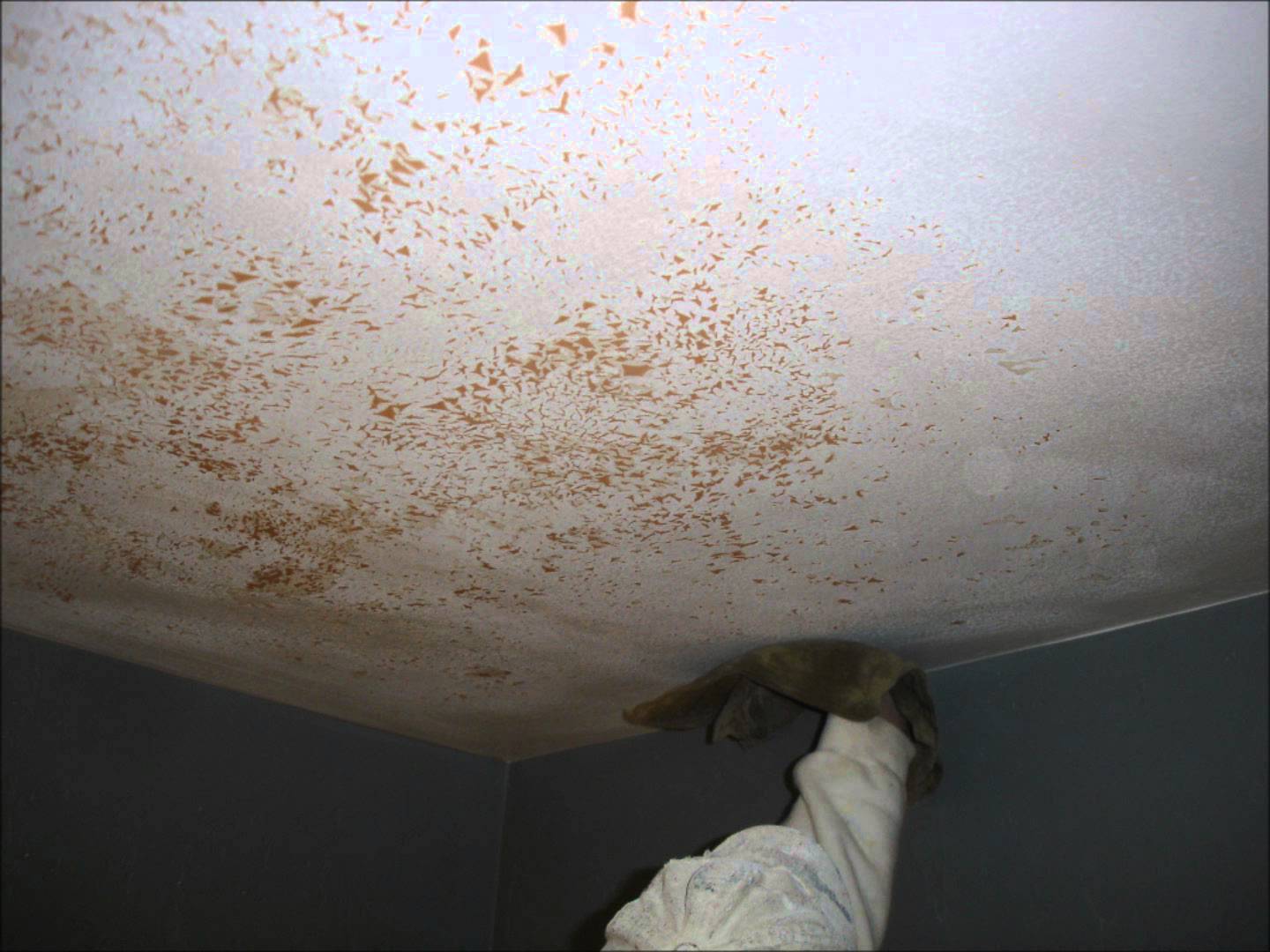Causes of Peeling Bathroom Ceiling Paint

Bathroom ceilings are prone to paint peeling due to the high moisture levels and humidity present in these spaces. The constant exposure to steam and condensation can weaken the paint bond, leading to peeling and flaking.
Moisture and Humidity
Moisture and humidity are the primary culprits behind peeling bathroom ceiling paint. When water vapor condenses on the ceiling, it seeps into the paint layers, causing them to swell and weaken. This weakening makes the paint susceptible to peeling, especially when subjected to temperature fluctuations or physical impact. For example, hot showers generate significant steam, which can condense on the cooler ceiling surface, creating a damp environment that encourages paint peeling.
Poor Ventilation
Poor ventilation is another significant factor contributing to paint peeling in bathrooms. When there is inadequate airflow, moisture and humidity build up, creating a breeding ground for mold and mildew growth. These microorganisms can further weaken the paint bond and accelerate the peeling process. Imagine a bathroom with a closed window and no exhaust fan. The steam from showers and baths has nowhere to escape, leading to high humidity levels and ultimately, peeling paint.
Improper Preparation
Improper surface preparation before painting can also contribute to peeling paint. If the old paint is not properly cleaned, sanded, and primed, the new paint will not adhere properly, resulting in peeling and flaking. For instance, if a bathroom ceiling is painted over dirt, grease, or mold without proper cleaning and priming, the new paint will not form a strong bond with the surface, leading to peeling.
Identifying the Cause of Peeling Paint, Bathroom ceiling paint peeling
Determining the specific cause of peeling paint in a bathroom requires careful observation of the environment and visual inspection of the affected areas.
- Moisture and Humidity: Look for signs of water damage, such as dampness, discoloration, or mold growth. This indicates that moisture is penetrating the paint layer and contributing to peeling.
- Poor Ventilation: Check if the bathroom has an exhaust fan and if it is working properly. If the fan is malfunctioning or absent, it suggests poor ventilation, leading to high humidity levels and paint peeling.
- Improper Preparation: Examine the peeling paint for signs of poor adhesion, such as loose flakes or bubbling. This indicates that the paint was not properly applied or that the surface was not adequately prepared before painting.
Preventing Peeling Bathroom Ceiling Paint: Bathroom Ceiling Paint Peeling

A bathroom ceiling that’s constantly battling moisture and humidity is prone to peeling paint. Fortunately, you can take steps to prevent this from happening. By understanding the causes of peeling paint and implementing preventative measures, you can ensure a long-lasting, beautiful finish for your bathroom ceiling.
Proper Ventilation
Adequate ventilation is crucial for preventing moisture buildup and peeling paint. It helps to remove excess moisture from the air, preventing condensation on the ceiling and walls. Here are some methods for ensuring proper ventilation:
- Exhaust Fans: Installing an exhaust fan in your bathroom is essential for removing steam and moisture. The fan should be vented to the outside, not into the attic. When showering or bathing, turn the fan on and let it run for at least 15 minutes after you finish.
- Opening Windows: If you have windows in your bathroom, open them for a few minutes after showering or bathing to allow fresh air to circulate. This helps to remove excess moisture and prevent condensation.
- Optimizing Air Circulation: Ensure that there is proper airflow in your bathroom. This can be achieved by removing obstructions, such as furniture or curtains, that may block airflow.
Moisture Control
Controlling moisture in the bathroom is crucial for preventing peeling paint. Here are some tips for managing moisture levels:
- Keep the Bathroom Dry: Wipe down surfaces, including the shower walls, floor, and ceiling, after each use to prevent water droplets from lingering.
- Fix Leaks: Address any leaks promptly to prevent water damage and moisture buildup.
- Use a Dehumidifier: If your bathroom is prone to excessive humidity, consider using a dehumidifier to remove excess moisture from the air.
Choosing the Right Paint
The type of paint you choose for your bathroom ceiling can significantly impact its durability and resistance to peeling. Here’s a table that Artikels different types of bathroom ceiling paint, their properties, and their suitability for preventing peeling:
| Paint Type | Properties | Suitability for Preventing Peeling |
|---|---|---|
| Acrylic Latex Paint | Durable, washable, mildew-resistant, and dries quickly. | Highly suitable for bathrooms, as it can withstand moisture and humidity. |
| Epoxy Paint | Extremely durable, moisture-resistant, and can be applied over existing paint. | Ideal for areas with high moisture levels, such as shower stalls or around tubs. |
| Oil-Based Paint | Durable and moisture-resistant, but can be more difficult to apply and clean up. | Suitable for bathrooms, but may not be as breathable as acrylic latex paint. |
Preparing the Surface
Before painting your bathroom ceiling, it’s essential to prepare the surface properly to ensure the paint adheres well and prevents peeling. Here are some steps for preparing the surface:
- Clean the Ceiling: Remove dirt, dust, and cobwebs using a damp cloth or sponge.
- Repair Cracks and Holes: Fill any cracks or holes with spackling compound or patching compound.
- Sand the Surface: Lightly sand the ceiling to create a smooth surface for the paint to adhere to.
- Prime the Ceiling: Apply a primer specifically designed for bathrooms to seal the surface and improve paint adhesion.
Repairing Peeling Bathroom Ceiling Paint
Peeling paint on your bathroom ceiling can be unsightly and frustrating, but it’s a problem you can fix with some patience and the right tools. This section will guide you through the process of repairing peeling bathroom ceiling paint, step by step.
Preparing the Ceiling
Before you start repairing the peeling paint, it’s important to prepare the ceiling for the repair. This involves removing the loose paint, sanding the surface, and cleaning the area.
- Scrape off the loose paint: Using a scraper, carefully remove all loose paint from the ceiling. You may need to use a putty knife or a paint scraper depending on the severity of the peeling. Be sure to scrape gently to avoid damaging the ceiling surface. You can use a utility knife to loosen the paint, if needed.
- Sand the surface: Once all the loose paint is removed, sand the ceiling surface with sandpaper to create a smooth and even surface. This will help the new paint adhere properly. You can use fine-grit sandpaper for a smooth finish. If you are dealing with larger areas, you can use a sanding block or a power sander for faster results.
- Clean the area: After sanding, use a damp cloth to wipe away any dust or debris from the ceiling. Make sure the ceiling is completely dry before you proceed to the next step. This ensures that the paint will adhere properly.
Filling in Cracks and Holes
If you have any cracks or holes in the ceiling, you will need to fill them in before painting. This will help to create a smooth and even surface.
- Use a patching compound: Apply a patching compound to fill in the cracks and holes. You can use a putty knife to spread the compound evenly. Follow the manufacturer’s instructions for drying time.
- Sand the patched areas: Once the patching compound has dried, sand the patched areas with sandpaper to create a smooth surface. This will help to blend the patched areas with the rest of the ceiling.
Applying Primer
After you have prepared the ceiling, it is important to apply a primer. This will help the paint to adhere better and will create a more even finish.
- Choose the right primer: Choose a primer that is specifically designed for bathroom ceilings. This will help to prevent moisture damage and mold growth.
- Apply the primer evenly: Use a paint roller to apply the primer evenly to the ceiling. Make sure to cover all the areas that you have repaired. Allow the primer to dry completely before you proceed to the next step.
Painting the Ceiling
Now that you have prepared the ceiling and applied primer, you are ready to paint.
- Choose the right paint: Choose a paint that is specifically designed for bathrooms. This will help to prevent moisture damage and mold growth. Latex paint is a good choice for bathroom ceilings.
- Use a paint roller: Use a paint roller to apply the paint evenly to the ceiling. Make sure to cover all the areas that you have repaired.
- Apply multiple coats: Apply multiple coats of paint to ensure that the ceiling is completely covered. Allow each coat to dry completely before you apply the next coat.
Tips for Long-Lasting Results
- Choose a high-quality paint: High-quality paint will be more durable and will last longer.
- Use a primer: Primer will help the paint to adhere better and will create a more even finish.
- Ventilate the bathroom: Proper ventilation will help to prevent moisture damage and mold growth.
- Clean the ceiling regularly: Regular cleaning will help to keep the ceiling looking its best.
